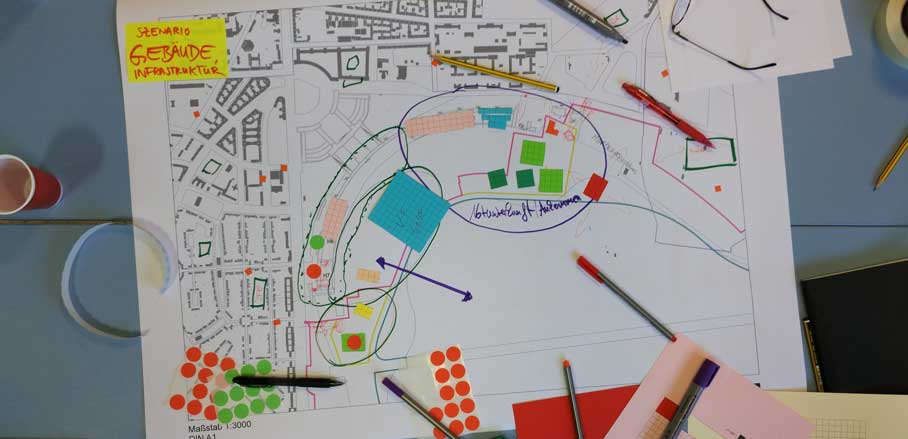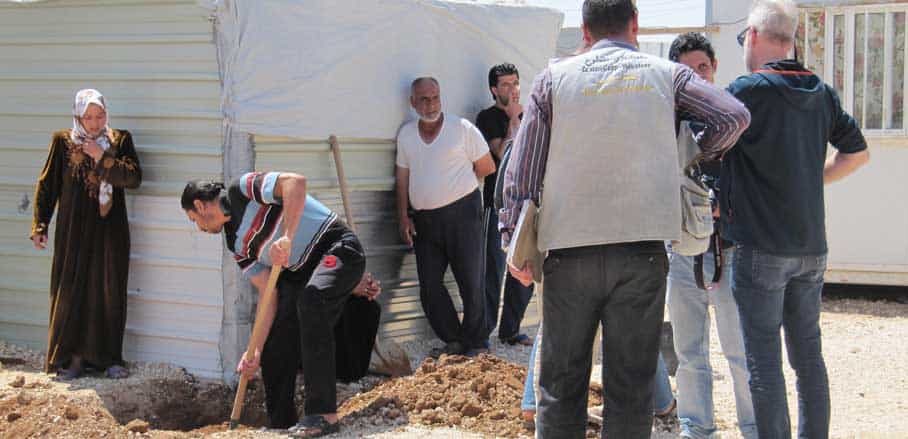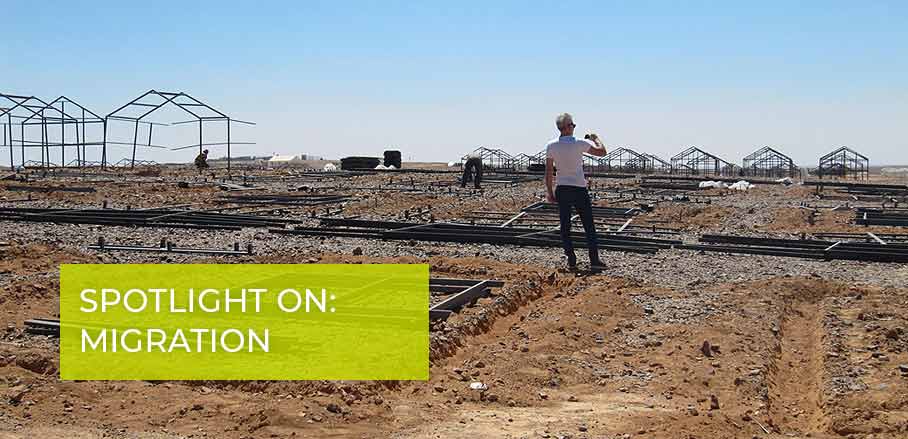“An Urban Habitat is Not Only Brick and Mortar”
Daniel Kerber is the founder and CEO of More than Shelters, a social business that brings a creative and innovative approach to the humanitarian context. Since it was founded in 2012, More than Shelters has been active in various places: parts of Jordan that border on neighbouring Syria, transit routes, and places where migrants and refugees arrive, such as Greece and Berlin, Germany. URBANET asked Daniel Kerber what More than Shelters brings to the housing debate.
You are a designer by profession. How did you get the idea of working in refugee camps?
Getting there was a journey. I studied Fine Arts and then went into Architecture and Urban Planning. When I was working on exhibitions and teaching in the creative industry, I was lucky enough to receive several grants and travel stipends. During my travels, I met people who were working in slums and informal settlements, and I joined them on a project basis.
To make a long story short, I realised that what we were doing there was good but not good enough. That’s when I came up with the idea to found a new entity together with other creatives to bring our professional skills to the humanitarian and crisis relief setting.
What can designers and urban planners contribute that goes beyond the traditional set-up of refugee camps?
As creatives and urban designers, we know that an urban habitat is not only brick and mortar. It is something very fluid that is primarily based on the relationships between the people who inhabit it. Every space is a social space first and foremost, so to say. And it is a complex setting, where small adjustments in design can make all the difference.
When I entered the humanitarian context, I realised that refugee camps are pretty well designed for the specific purpose of housing a lot of people for a very short time. In the early 2000s, a person stayed in a refugee camp for 1.5 years on average. Then they moved on – they were resettled or found ways to set up a life somewhere else.
In the beginning of the 2010s, this was starting to shift. The average duration of a stay in a refugee camp has now increased to 12 years, which means the whole setting has changed dramatically. A spatial design that was supposed to serve people for 1.5 years suddenly had to serve them for a decade or more. But the handbooks and design guidelines for camps had not been adequately adjusted.
The main purpose of refugee camps is to take care of people’s most basic needs. But we all know that this is not enough to lead a dignified life, especially if you are looking at a decade-long stay. Once other needs pop up – as they inevitably do in every single human context – the structure of a camp cannot fulfil them.
Whether one wants to spend more private time with one’s family, earn a living independently, or move forward in professional, educational, or economic terms – traditional refugee camps are not set up to meet or accommodate those needs. So we started to rethink the entire conception of refugee camps with the aim to meet the additional social and spatial needs of people who are staying there long-term.
You refer to your approach as “Integrated Humanitarian Design”. Could you explain what it is all about?
The term is maybe a bit too technical, but what we are trying to do is to bring in people with knowledge and skills from different disciplines who were not previously involved in the humanitarian sector: urban designers and planners, architects, but also anthropologists and business people, for example. They are the key to success when it comes to setting up a space in terms of social interaction.
By bringing them in, we are hoping to find appropriate answers for the complex setting of the refugee camp. This includes surface and infrastructure design as well as the design of the social aspect and enabling connections between people. Generally speaking, we are fighting the silo mentality and are trying to build new alliances for a holistic or “eco-systemic” approach to refugee camps.

© More than shelters
What does that mean in practice?
Living in a refugee camp can be a brutalising experience. Suddenly, you find yourself together with thousands of other people under one and the same framework, the refugee status. You are not a person anymore but a refugee. Your rights are very restricted, and a lot of your freedom is taken away from you.
Our approach is to give ownership back to the people by creating ways for them to participate and to be heard. That way, they can regain some control over their lives. Imagine a situation where you suddenly have 80,000 people who arrive from somewhere else to a new environment. Either you can oppress them by treating them as mere beneficiaries of services and goods you hand out to them. Or you can take a better approach and bring participatory design to this context.
We design the space together with the people living there, and we see them as active citizens instead of beneficiaries. This changes a lot in people’s perception of themselves and others. It’s an important psychological switch, so to say. A refugee camp is quickly associated with human warehousing logic that takes away or conceals residents’ talents, identities and personal histories. We want to move away from this understanding to a more humane, interactive, and empowering one, and we are doing so by creating ways for residents to participate in the development and shaping of their new environments.
But we always try to work on two levels: on the ground with the residents of the refugee camps, and with the entities that administer them.
The administrative systems that we found in place both in refugee accommodations in Za’atari, Jordan, and at Tempelhofer Airport in Germany were really rigid. There was little flexibility and even sometimes hostility towards any kind of innovation. So we started working with the actors that are implicated in these systems – politicians, state secretaries and other administrative staff – and formed multi-stakeholder groups. By doing so, we were able to bring different entities of the city of Berlin to the same table. Hence, they could not only coordinate better amongst each other, but also cooperate on the complex challenges for Tempelhof.
The same approach was used in Jordan for Za’atari and many of our other projects. We often engage the services of people from universities, the private sector and other specialists who then run our co-creation sessions. Working with multi-disciplinary teams in multi-stakeholder groups is part of our methodology to attain systemic change.

© More than shelters
More than Shelters uses the term “arrival cities” in relation to refugee camps. Why?
Debates around refugee camps are usually full of tough and negative imagery: crowded, tiny spaces filled with people, with few resources and means to live a dignified life. We are aiming for a shift in perspective when we refer to refugee camps as “arrival cities”. Of course these camps are not cities as such, but they are being developed as long-term housing spaces where people should be able to get on with their lives rather than waiting for years for an uncertain future. I think “arrival city” captures this more positive understanding.
- “An Urban Habitat is Not Only Brick and Mortar” - 5. December 2018
